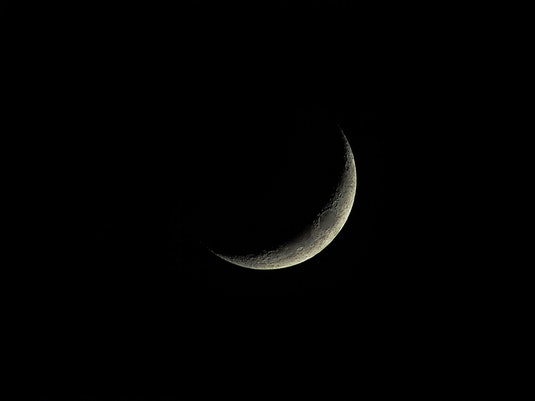Moon is the only natural satellite revolving around the Earth.
It revolves around the earth and also around itself. It takes 29.5 days to complete a revolution around the planet.
The moon we see at night is due to illumination by the sun. Since the moon revolves around the earth, it looks in different shapes on different days.
This different shape is due to varying amounts of the illuminated part of the moon appearing to us. At any point in time, we can see one side of the moon.
Phases of the moon

In total, there are 8 phases of the moon, like the
- New moon
- Waxing Crescent
- First Quarter
- Waxing Gibbous
- Full Moon
- Waning Gibbous
- Third Quarter
- Waning Crescent
Certain phases repeat themselves like two crescents, gibbous and half phases, each cycle with different sides being illuminated.
New moon
Here, the moon appears dark or invisible to us.
But in fact, the other side of the moon is illuminated and is not seen by us.
This phase occurs because the moon lies in between the Earth and the sun.
The moon’s side facing the sun has a light, while its other side is seen as dark to those on the earth.
So, the dark side of the moon faces the earth, and the light side faces the sun. Some call it no moon day as the moon is invisible in the sky.

Waxing Crescent
- This is the next stage, and only a small part of the Moon appears.
- This is lighted by the sun and gradually grows larger on successive days from right to left.
- The size of the moon appears to be the smallest at this phase.
First Quarter
- This is exactly half of the moon from the right side being lighted, while the remaining half on the left is dark.
- With each passing day, the lighted portion grows.
Waxing Gibbous
- From right to left, the extent of illumination is increased.

- More than half a portion of the Moon is illuminated, and as days pass, more and more becomes lighted.

Full Moon
This phase occurs when the earth is between the sun and the moon. Here, the illuminated side of the moon faces the earth.
The entire moon’s incomplete circular form can be seen on this day. This day is called full moon day.
Waning Gibbous
From right to left, the moon looks bright. As the days go on, the darkness grows further.
More than half of the moon appears light. This becomes less and less on following days.
Third Quarter
This is the opposite of the first quarter, and only the left half of the moon appears lighted.
This lighted portion grows smaller and smaller on successive days.
Waning Crescent
From right to left of the moon, only a small part is illuminated. The remaining area looks dark.
The lighted moon is visible but grows smaller and smaller on each successive day.
Frequently asked questions and answers.
During which phase of the moon do neap tides occur?
The neap tides occur during the first and last quarter of the moon phases, like the waxing and waning periods.
References
as the seasons spring to Fall which direction does the moon move
How do tides occur?
Hi, the tides occur under the gravitational influence of the moon. Their speed and waver length vary as per the moon cycle.
thanks, this really helped
Welcome nathan.
yeah it did thanks